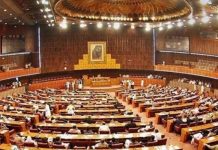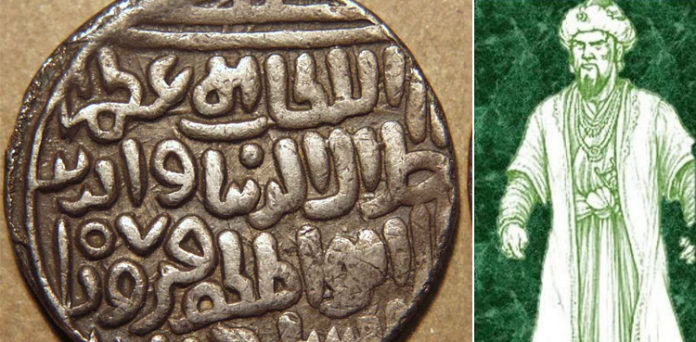Amongst the medieval monarchs of the subcontinent the Khilji Sultan Alauddin stands out. Despite being illiterate, he was blessed with tremendous wisdom and was a man of action.
It was in his reign that the Delhi Sultanate saw tremendous expansion and became the idiom of Muslim rule. He was a monarch with a profound sense of strategy and he planned for the future though he also realised the limitations of human existence. He practically rose from nowhere but left an indelible mark on the history of the subcontinent.
Alauddin Khilji was the second monarch of the newly established Khilji dynasty that hardly lasted for thirty years and Alauddin ruled for twenty of them. A striking feature of Alauddin Khilji’s administration (1296–1316) was his economic reform.
His market control measures at the beginning of the fourteenth century gave him the reputation of a
daring political economist. The Sultan was an ambitious imperialist. He moved away from Balban’s policy of consolidation and initiated the policy of expansion. He conquered Gujarat, Ranthambhor, Chitor and Malwa and founded a vast empire in northern India.
During Alauddin’s rule, the Mongols were a serious menace to the Sultanate. To save the Sultanate, Alauddindin built a new army, reformed and renovated the forts from Delhi to the North-west and deployed his troops. This large army was a drain on the state budget and Alauddin found solution not in increasing the state income but keeping the army satisfied with controlled market.
Alauddin wanted to give economic relief to the subject people. The cost of production of a commodity was determined before its price was settled and he first settled the price of good grains. While settling the price of commodities, he took into account the wages of skilled and unskilled workers and profits on
invested capital.
The capitalist big merchants of his times were profit mongers and he controlled their profiteering tendency. His market control system survived even after his death showing that basic law of economics was not violated. He wanted to set up a natural market system.
In his times, there were two powerful Hindu merchant communities—Nayaks were grain merchants while Multanis were cloth merchants and the Sultan brought these two groups under state control. His measures transformed merchant monopoly into a state monopoly. He set up four markets, first of which was a grain market called Mandi. He issued elaborate orders to control this market.
The Sultan first settled the cost of production of all grains and then fixed their market price.
Wheat price was fixed and it was not allowed to be increased. Wheat per maund was sold
at 7.5 jitals, barley at 4 jitals, rice and cereals at 5 jitals. At this time, a citizen of Delhi could purchase 88 seers of wheat or 98 seers of rice or cereal by spending a single rupee.
To control the wheat market, he appointed Malik Kabul Ulughkhani Shahana or superintendent of the market with barids (spies) under him.
The Sultan set up several granaries in different localities of Delhi. He collected grains from the Doab (the Khalisa) in lieu of revenue.
Besides, he took measures to control the grain merchants. They were organised into a separate merchants group who lived in Delhi with their families. In normal times, they brought so much grains in Delhi that government’s reserve grains were not disturbed. He strictly controlled profiteering in the grainmarket. He rigorously collected revenue at the time of harvest, which reduced the price level in the market.
Shahana-i-Mandi, barids and others maintained strict vigil over the grain market. Market regulation and strict supervision were part of his system. For famine, the Sultan made provision for the supply of grains through rationing as emergency measure. Every locality had sufficient reserve grain for supply.
Serai Adl was the second market established that was a special subsidised market for industrial goods. This market was situated at the Badaun gate of Delhi.
Commodities were imported from outside the empire and sold in this market. Cloth, sugar, medicine, dried fruits, butter, fuel, oil and other necessaries were sold in this market.
Fine-quality silk cloths were sold in this market. One rupee could buy 40 yards of coarse cloth or 20 yards of fine cloth. One fine silk cloth cost 16 rupees, one seer of sugar cost 1.5 jitals, jaggery 2.5 jitals and ghee sold at the rate of 1.5 seers per jital.
Fuel was available at the rate of three seers a jital and salt five seers a jital.
The merchants who traded in this market were registered with Diwan-i-Riyasat (Department of commerce). These merchants were known as Saudagar-i-Mizani, i.e. controlled merchants. They were to bring a certain amount of commodities to the Serai Adl and sell it at government-approved price.
This market remained full of articles all the year round because of government control.
The Multani merchants brought valuable dresses to this market from outside the empire and the aristocrats of Delhi purchased it at a fixed price. For this, the Sultan gave them subsidy of 20 lakhs of rupees. They were also given the right to control Serai Adl.
Nobody was allowed to make profit; it was strictly controlled by the permit officer (Parwana officer).
The third controlled market of Alauddin dealt with horses, slaves and cattle. The Sultan controlled price of this market, merchants and brokers and maintained strict vigil over it.
A large part of the army consisted of cavalrymen and the Turks gave great importance to cavalry. The state purchased a large number of horses every year. Common people also purchased horses for various purposes.
Brokers and profiteers operated in this horse market and he strictly controlled them. Price of horses was fixed according to quality. Firstclass horse cost 100–120 rupees, second class 80–90 rupees and third class 60–70 rupees.
The pony horses that could not be drafted in the army were the cheapest, 20–25 rupees.
Sultan’s measures stabilised the market, the merchants and brokers were now much restrained.
The Sultan did the same in respect of slaves and cattle. A common slave sold at 5–12 rupees, a young slave sold at 20–30 rupees. An unskilled slave could be purchased at 7–8 rupees, a female slave 5–12 rupees, a concubine at 20–40 rupees. A drought ox or a buffalo could be purchased at 4–5 rupees.
A common ox sold at 3 rupees, milk cow 3–4 rupees, milk buffalo 10–12 rupees. A goat or a sheep sold at 10–12 jitals, a cow for meat sold at 1.5–2 rupees, buffalo for 5–6 rupees.
The fourth market was organised under the Diwan-i-Riyasat. With the help of the officials of this department, the Sultan fixed the price of all commodities sold in this market.
The market comprised the whole area of the capital. This was the common market in which all necessaries of life were available. Fish, meat, vegetables, bread, furniture, hat, comb, sorts and needles all were sold here.
All this could be procured at fixed price. The Sultan appointed Yakub Nazir his commerce minister who was an efficient and honest officer. He controlled this common market.
This minister appointed a Shahana or inspector for every local market. Their duty was to maintain fixed price, weights and measures and stop adulteration. For the supervision of this department, shopkeepers of the common market were compelled to sell at fixed price with just measure and weight and pure goods.
Rationing was an integral part of his system and there was no famine in his reign. Diwan-i-Riyasat, Shahana and barids all worked sincerely and efficiently. If an employee neglected his duty, the Sultan came to know of it through his spies and severely punished him.
His market control system gave economic security to his people.
Sultan’s measures were extended beyond the capital to the provinces and these areas were coterminous to the Sultan’s revenue area. From Lahore in the north-west to Chhain in Rajasthan, and to Katehr (Rohilkhand) in the east, was its operative area.
The Multan merchants were so deeply involved in the markets of Delhi that they exported commodities of northern India to their areas.
This system was unique; neither his predecessor nor successor could claim credit for it.
This article originally appeared in The Weekender and has been reproduced with permission





























